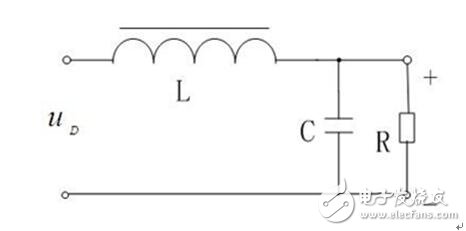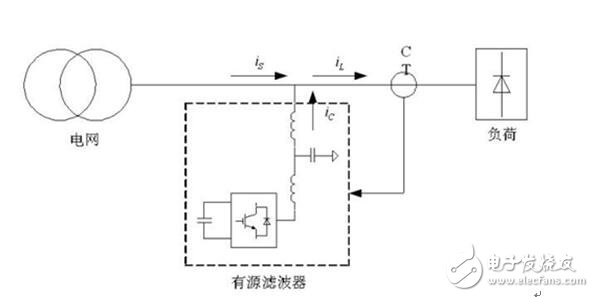Filtering is an operation that filters out specific band frequencies in a signal and is an important measure to suppress and prevent interference. Harmonic control must first control the source of harmonic generation, and secondly we must eliminate the harmonics by adding filtering devices. How to choose the right harmonic quality scheme is very important.
First, passive filtering
definition
Passive filter, also known as LC filter, is a filter circuit composed of a combination of inductor, capacitor and resistor. It can filter out one or more harmonics. The most common passive filter structure is the inductor. In series with the capacitor, it can form a low impedance bypass for the main subharmonics (3, 5, 7); single tuned filters, double tuned filters, and high pass filters are all passive filters. The passive filter is composed of passive components such as LC. It is designed to be very low impedance at a certain frequency, and the corresponding frequency harmonic current is shunted. The behavior mode is to provide a passive harmonic current bypass channel. Figure 1 shows the passive filter schematic.

Figure 1 Passive filter schematic
Advantages and disadvantages
Advantages: The passive filter has the advantages of simple structure, low cost, high operational reliability and low operating cost.
Disadvantages: The signal in the passband has energy loss, and the load effect is obvious. When the inductor element is used, the electromagnetic induction is easily caused. When the inductance L is large, the volume and weight of the filter are relatively large, and it is not applicable in the low frequency domain.
application
Due to the advantages of passive filtering with large capacity and low price, the filtering of the steel industry adopts passive filtering. At present, the domestic filtering market (power harmonic control market) mainly uses passive filtering. Internationally represented by ABB, Schneider and Siemens, the country is represented by Satons, Wenzhou Tsinghua Electronics, Shanda Huatian, Harbin Institute of Technology, Xi'an Saibo and Greenbojie. The development situation is reflected quickly, harmonic control is thorough, and comprehensive control is the main.
Second, active filtering
definition
The active filter (AcTIve Power Filter, APF for short) is a new type of power electronic device for dynamically suppressing harmonics and compensating for reactive power. It can compensate harmonics with varying magnitude and frequency as well as varying reactive power. It is called active, as the name implies, the device needs to provide power (to compensate the harmonics of the main circuit), and its application can overcome the shortcomings of traditional harmonic suppression and reactive compensation methods such as LC passive filters (traditional only Can be fixed compensation), realize dynamic tracking compensation, and can complement both harmonics and reactive power.
The three-phase circuit instantaneous reactive power theory is the main basic theory of APF development. APF has two types: parallel type and series type. The former uses more. The parallel active filter mainly controls current harmonics. The series active filter is mainly Control problems caused by voltage harmonics, etc. Compared with the passive filter, the active filter has good control effect, and can mainly filter out multiple times and higher harmonics at the same time, and does not cause resonance, but the price is relatively high. Figure 2 shows the active filter structure.

Figure 2 Active filter structure
Advantages and disadvantages
Advantages: The harmonics can be dynamically filtered out, and the harmonics in the system can be completely absorbed; no resonance will occur. The signal in the passband not only has no energy loss, but also can be amplified, the load effect is not obvious, and the mutual influence is small when the multi-level is connected. The high-order filter is easily formed by the simple method of cascading, and the filter is small in size. Light weight, no magnetic shielding is required.
Disadvantages: The passband range is limited by the bandwidth of active devices. It needs DC power supply, and the reliability is not as high as that of passive filters. It is not suitable for high voltage, high frequency and high power.
application
Active filters can be widely used in distribution networks of industrial, commercial and institutional groups, such as: power systems, electrolytic plating companies, water treatment equipment, petrochemical enterprises, large shopping malls and office buildings, precision electronics companies, airports/ports. Power supply systems, medical institutions, etc. Depending on the application, the application of the HTAPF-I active power filter will ensure power supply reliability, reduce interference, improve product quality, increase equipment life and reduce equipment damage.
l communications industry;
l semiconductor industry;
l Automotive manufacturing;
l DC motor harmonic control;
l hospital system;
l Theater and gymnasium.
1.27Mm Female Header,1.27Mm Header Connector,Circuit Board Female Header Connector,Electronic Assemblies Male Right-Angle Connectors
Dongguan City Yuanyue Electronics Co.Ltd , https://www.yuanyueconnector.com